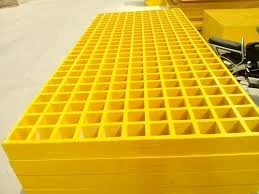loading...
- No. 9, Xingyuan South Street, Dongwaihuan Road, Zaoqiang County, Hengshui, Hebei, China
- admin@zjcomposites.com
- +86 15097380338
- Welcome to visit our website!
frp post
Understanding FRP A Comprehensive Overview
Fiber Reinforced Polymer (FRP) is a composite material that is widely used in various industries due to its unparalleled strength-to-weight ratio, corrosion resistance, and versatility. Composed of a polymer matrix reinforced with fibers—usually glass, carbon, or aramid—FRP has increasingly become a preferred material for numerous applications ranging from construction to aerospace.
At the core of FRP's appeal is its lightweight nature. Traditional materials like steel and concrete are heavy, making them cumbersome for certain applications. In contrast, FRP can achieve similar strength levels while significantly reducing overall weight. This feature is invaluable in the aerospace industry, where every ounce saved can lead to increased fuel efficiency and performance. Additionally, in construction, lighter materials can ease the burden on structural foundations and help reduce construction costs.
.
The versatility of FRP is another significant advantage. It can be molded into complex shapes and structures, allowing for innovative designs that are often not feasible with traditional materials. The ability to customize the fiber configuration and resin types means that manufacturers can create FRP products tailored to specific load requirements and environmental conditions. This adaptability has led to its use in a wide range of applications, including bridges, pipes, and even sporting goods.
frp post

However, the benefits of FRP come with challenges. One of the primary concerns is the environmental impact of its production and eventual disposal. The manufacturing process for FRP can be energy-intensive, and the polymers used are often derived from non-renewable resources. Further complicating matters, FRP materials are not easily recyclable, which raises questions about sustainability in a world increasingly focused on environmental responsibility. As research progresses, developing more eco-friendly options for FRP is becoming a priority within the industry.
Additionally, the mechanical properties of FRP can be influenced by the type of fibers and matrix used, as well as the manufacturing process. For example, carbon fibers provide high strength and stiffness but come at a higher cost compared to glass fibers. Balancing performance and cost is crucial for companies looking to capitalize on FRP's advantages while keeping projects within budget.
Safety is another consideration in the use of FRP materials. While generally strong, FRP can exhibit brittle failure under certain conditions, which may lead to sudden catastrophic failures if not properly tested and designed. Engineers and designers must be diligent in evaluating the applications and stress conditions for which FRP components are intended. Rigorous testing and adherence to safety standards are essential for ensuring that FRP products perform reliably over their intended lifespan.
Despite these challenges, the future of FRP looks promising. As technology advances, researchers are continuously exploring new formulations and manufacturing techniques that can enhance the performance and sustainability of FRP materials. Innovations in recycling and biodegradability could also lead to more environmentally friendly options in the future.
In summary, Fiber Reinforced Polymer represents a remarkable fusion of engineering and materials science that has transformed many industries. Its lightweight nature, excellent resistance to corrosion, and manufacturing versatility make it an attractive choice for a myriad of applications. While challenges remain, particularly regarding sustainability and safety, ongoing research and development are poised to address these issues, paving the way for an even broader adoption of FRP in the years to come. As industries continue to innovate and prioritize efficiency and environmental responsibility, FRP undoubtedly holds a key role in the future of modern materials.
-
Transform Your Spaces with FRP Grating SolutionsNewsNov.04,2024
-
The Versatility and Strength of FRP RodsNewsNov.04,2024
-
The Excellence of Fiberglass Water TanksNewsNov.04,2024
-
The Benefits of FRP Grating for Your ProjectsNewsNov.04,2024
-
Elevate Your Efficiency with FRP Pressure VesselsNewsNov.04,2024
-
Welcome to the World of FRP Pressure VesselsNewsOct.12,2024
-
Unveiling the Future of Filtration: Why FRP Filter Vessels are a Game ChangerNewsOct.12,2024
